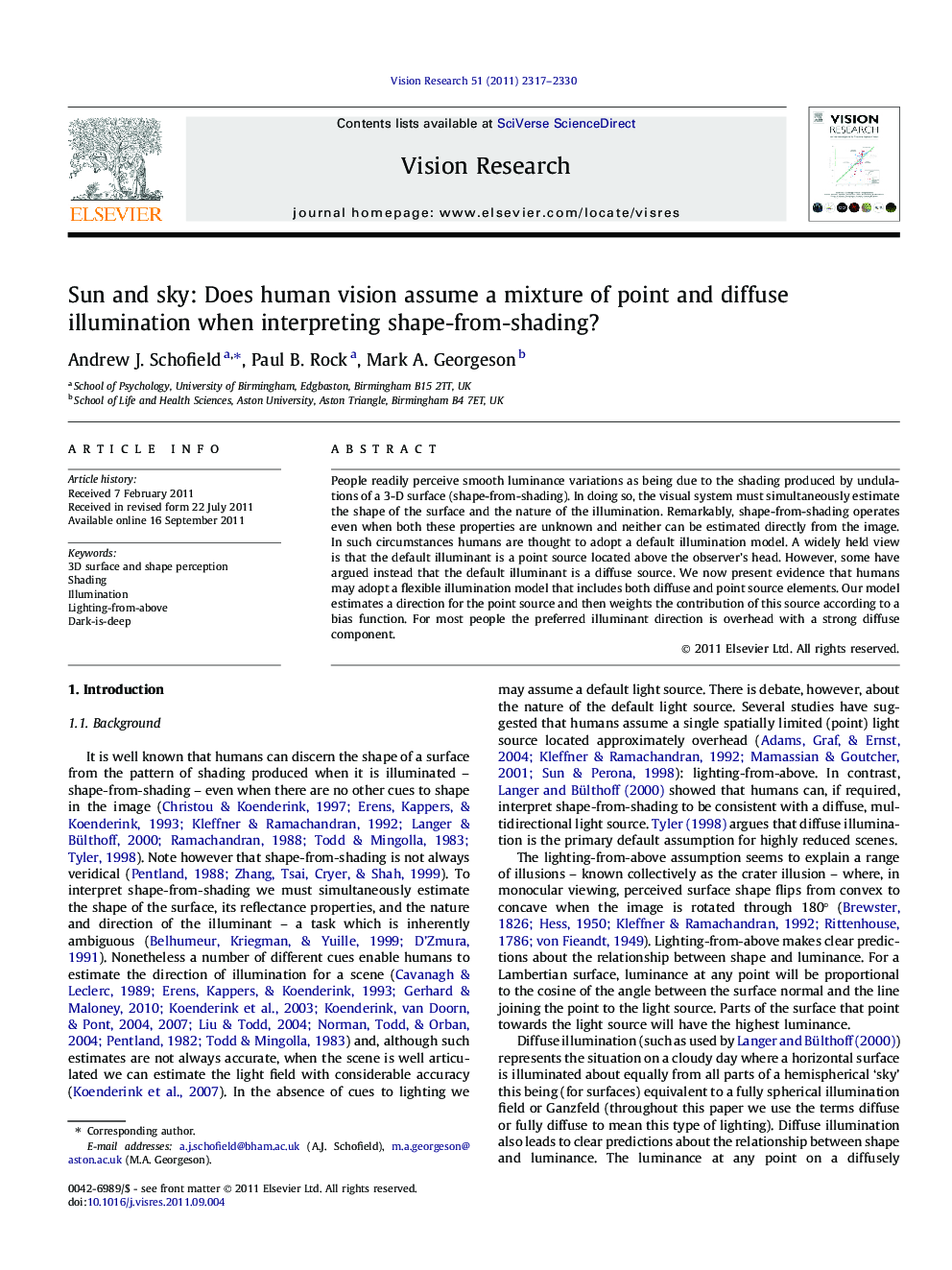| Article ID | Journal | Published Year | Pages | File Type |
|---|---|---|---|---|
| 4034115 | Vision Research | 2011 | 14 Pages |
People readily perceive smooth luminance variations as being due to the shading produced by undulations of a 3-D surface (shape-from-shading). In doing so, the visual system must simultaneously estimate the shape of the surface and the nature of the illumination. Remarkably, shape-from-shading operates even when both these properties are unknown and neither can be estimated directly from the image. In such circumstances humans are thought to adopt a default illumination model. A widely held view is that the default illuminant is a point source located above the observer’s head. However, some have argued instead that the default illuminant is a diffuse source. We now present evidence that humans may adopt a flexible illumination model that includes both diffuse and point source elements. Our model estimates a direction for the point source and then weights the contribution of this source according to a bias function. For most people the preferred illuminant direction is overhead with a strong diffuse component.
► Shape-from-shading was assessed using sine wave grating stimuli. ► Offsets between luminance peaks and surface peaks varied with orientation. ► This effect is modelled by shape-from-shading under a mixed lighting assumption. ► Humans adopt a mixture of point and diffuse lighting for shape-from-shading.
